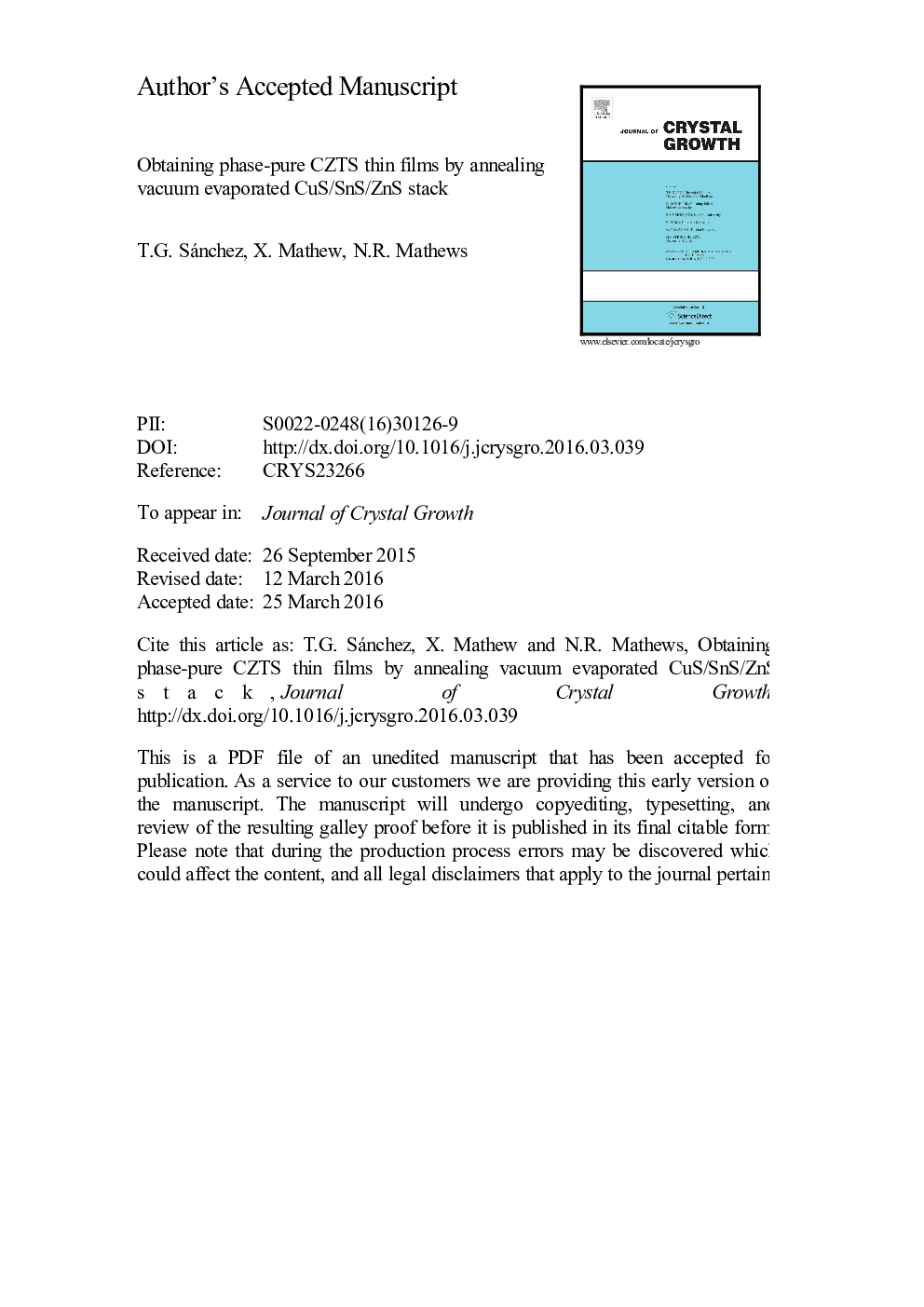| Article ID | Journal | Published Year | Pages | File Type |
|---|---|---|---|---|
| 1789604 | Journal of Crystal Growth | 2016 | 30 Pages |
Abstract
Cu2ZnSnS4 (CZTS) thin films were obtained by the sequential thermal evaporation of metal binary sulfides in the order CuS/SnS/ZnS, followed by annealing in Ar/S atmosphere. The as-grown films were annealed at different temperatures ranging between 350 and 600 °C, for 10 min. Based on the preliminary results, the temperatures 550 °C and 600 °C were selected for further optimization and a second batch of films were annealed for different time durations (10 min, 30 min and 60 min) at these temperatures in order to identify the conditions to obtain phase-pure CZTS films. The structural properties and chemical compositions at each temperature were investigated in order to optimize the phase purity and film stoichiometry. We have identified adequate and reproducible conditions to obtain the elemental ratio Cu/(Zn+Sn) and Zn/Sn close to 0.78 and 1.19 respectively, which is in the range of material composition required for promising solar cells. In addition the optimized material showed excellent optical and electrical properties to be used as a photovoltaic absorber layer. The optical band gap was found to be about 1.52 eV, and the carrier concentration, hall mobility, and resistivity were in the range of 8.372Ã1015 cmâ3, 3.103 cm2/Vs and 340.3 Ω-cm respectively. Three traps with activation energies 4.39, 8.1, and 34 meV were detected.
Keywords
Related Topics
Physical Sciences and Engineering
Physics and Astronomy
Condensed Matter Physics
Authors
T.G. Sánchez, X. Mathew, N.R. Mathews,
